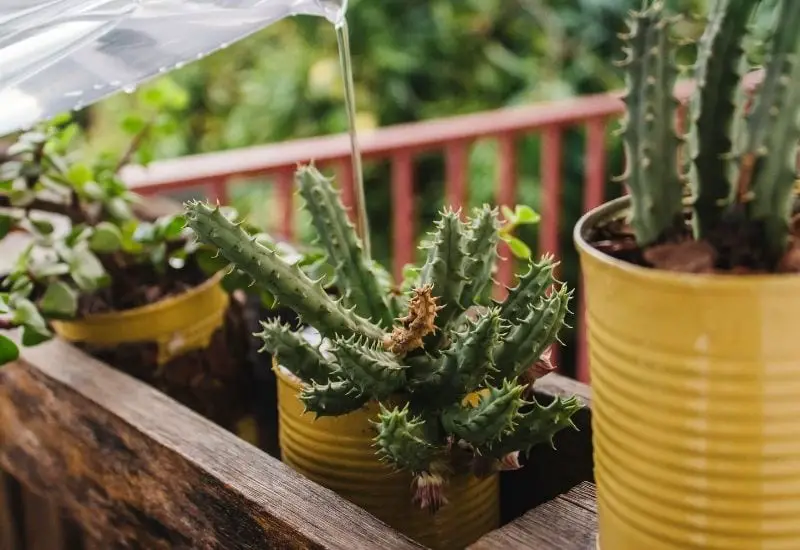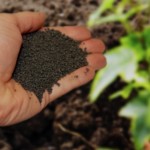Introduction: Cacti, with their unique and striking appearance, are popular plants that thrive in arid environments. One of the keys to their success is understanding the art of proper watering. In this guide, we’ll delve into the intricacies of watering cacti, ensuring they receive the right amount of moisture for optimal growth and health. Whether you’re a seasoned cactus enthusiast or a beginner, these tips and techniques will help you master the art of cactus watering and enjoy stunning, resilient plants.
The Watering Needs of Cacti: Cacti have evolved to survive in harsh, arid conditions where water is scarce. Understanding their unique water requirements is crucial to maintaining their health. Unlike many other plants, cacti prefer to go through cycles of dryness and hydration. Their ability to store water in their fleshy stems allows them to withstand periods of drought.
Choosing the Right Watering Method: When it comes to watering cacti, less is often more. The soak and dry method is a widely recommended approach. This involves thoroughly watering the cactus until water drains from the bottom of the pot. Afterward, allow the soil to dry out completely before watering again. This technique mimics the natural rainfall patterns in arid regions, preventing overwatering and root rot.
Another effective method is bottom watering. Place the cactus pot in a shallow container of water and let the soil absorb moisture from the bottom. This method prevents water from coming into contact with the cactus’s sensitive stem and helps ensure that the roots receive adequate hydration.
Factors Influencing Watering Frequency: Several factors influence how often you should water your cactus. The species of cactus, the size of the pot, humidity levels, and environmental conditions all play a role. Cacti in smaller pots will generally require more frequent watering than those in larger pots. Additionally, cacti in high-humidity environments may need less frequent watering compared to those in drier conditions.
Signs of Overwatering and Underwatering: Recognizing the signs of overwatering and underwatering is crucial for maintaining healthy cacti. Overwatering can lead to yellowing and mushy stems, as well as an unpleasant odor caused by rot. On the other hand, underwatered cacti will appear shriveled and wrinkled, with their skin puckering around the ribs.
Seasonal Watering Adjustments: Cacti have varying water needs throughout the year. During the active growing season, which typically occurs in spring and summer, cacti require more frequent watering. As they enter their dormant phase in the cooler months, reduce watering to prevent root rot. Be sure to adjust your watering routine to align with the natural cycles of your cacti.
Watering Tools and Containers: Selecting the right watering tools and containers is essential for effectively hydrating your cacti. A narrow-spouted watering can or a spray bottle can provide targeted watering without saturating the entire plant. This precision helps avoid unnecessary moisture contact with the stem and minimizes the risk of fungal issues.
Potting Mix and Drainage: Cacti require well-draining soil to prevent waterlogged roots. Choosing a specialized cactus mix or adding sand or perlite to a regular potting mix can improve drainage. Ensure that your cactus pot has adequate drainage holes to allow excess water to escape. Using pots with drainage trays can help catch any water runoff.
Caring for Newly Planted Cacti: Newly planted cacti require special attention to ensure their successful establishment. Water sparingly during this period to avoid overwatering, which can stress the plant. Additionally, avoid transplanting cacti during their dormant phase, as they are less equipped to handle the stress of a move.
FAQ: Addressing Common Cactus Watering Questions:
Q1. How often should I water my cactus? A1. Water frequency varies; aim for thorough watering when the soil is dry to the touch, usually every 2-4 weeks.
Q2. Can I mist my cactus to increase humidity? A2. Cacti prefer low humidity. Misting is unnecessary and can increase the risk of fungal issues.
Q3. What’s the best time of day to water cacti? A3. Water in the morning so excess moisture evaporates during the day, reducing the risk of fungal growth.
Conclusion: Mastering the art of watering cacti is essential for maintaining these unique and resilient plants. By understanding their water requirements, choosing the right method, and adapting to changing seasons, you’ll be well on your way to cultivating a collection of healthy, vibrant cacti that thrive in their arid environment. With these insights in hand, you’re ready to embark on a journey of cactus care and create a striking oasis of desert beauty.






